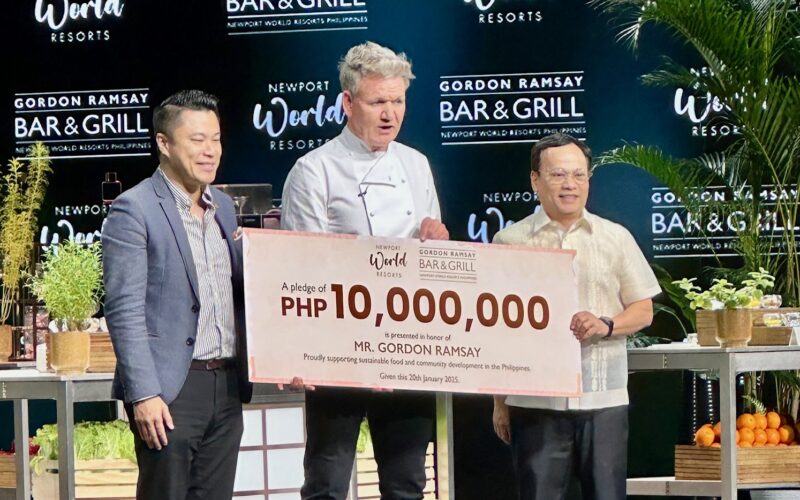The celebrity chef and person behind Gordon Ramsay Bar & Grill, among other restaurants and reality TV shows, regaled foodies, culinary students, restaurateurs and fellow chefs at the Newport Performing Arts Theater with stories and words of wisdom while revealing his personal Pinoy culinary favorites, including sisig, spring rolls a la beef Wellington and halo-halo.
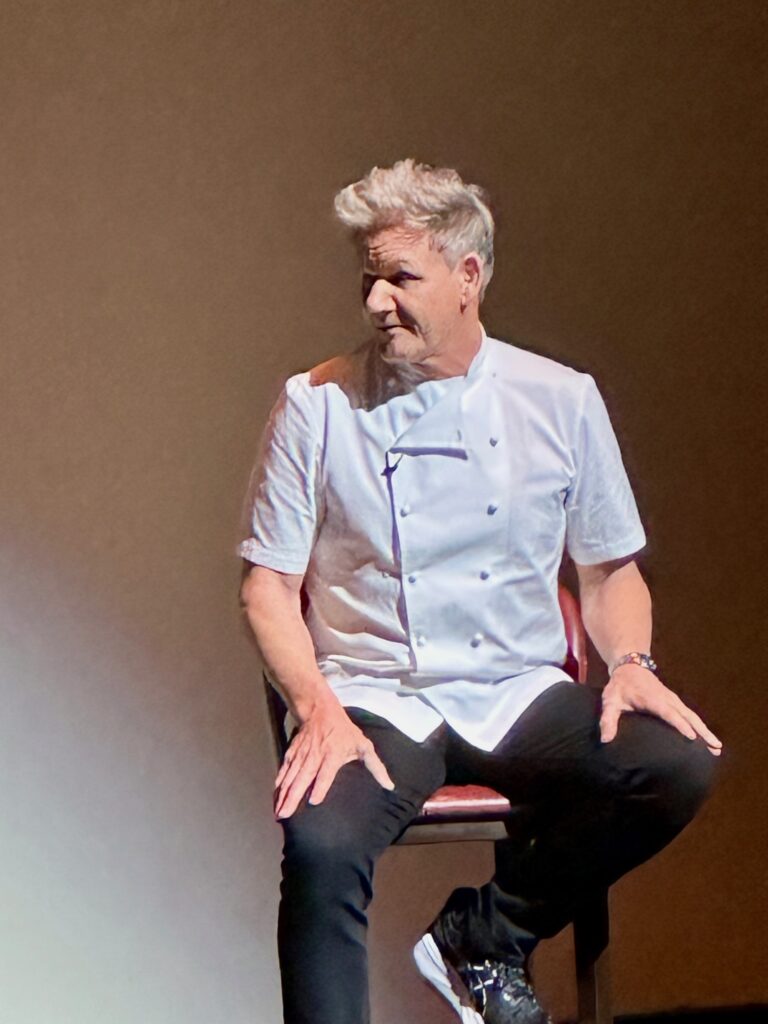
By Alex Y. Vergara
“Filipino cuisine for me is the ‘Sleeping Beauty of Asia,’” declares Gordon Ramsay. “It’s high up there in Southeast Asia and can give a big kick in the ass and really become one of the frontrunners of Asia. There’s no reason it can’t.”
During a one-hour special appearance yesterday afternoon at the Newport Performing Arts Theater, the celebrity British chef, who was all praises for the Filipino cuisine and the country’s wealth of culinary talent, came across as a different man on stage compared to his public persona on his TV shows. The first-time visitor to Manila is here for several days upon the invitation of Kevin Tan, CEO of Alliance Global Group.
The man behind the highly successful Gordon Ramsay Bar & Grill chain, among other restaurants the world over, including one at Newport World Resorts, displayed none of the fiery temper, stern demeanor and, at times, profanity-laden language he has become known for in his reality TV shows as he dressed down competing chefs for failing to meet his exacting standards.
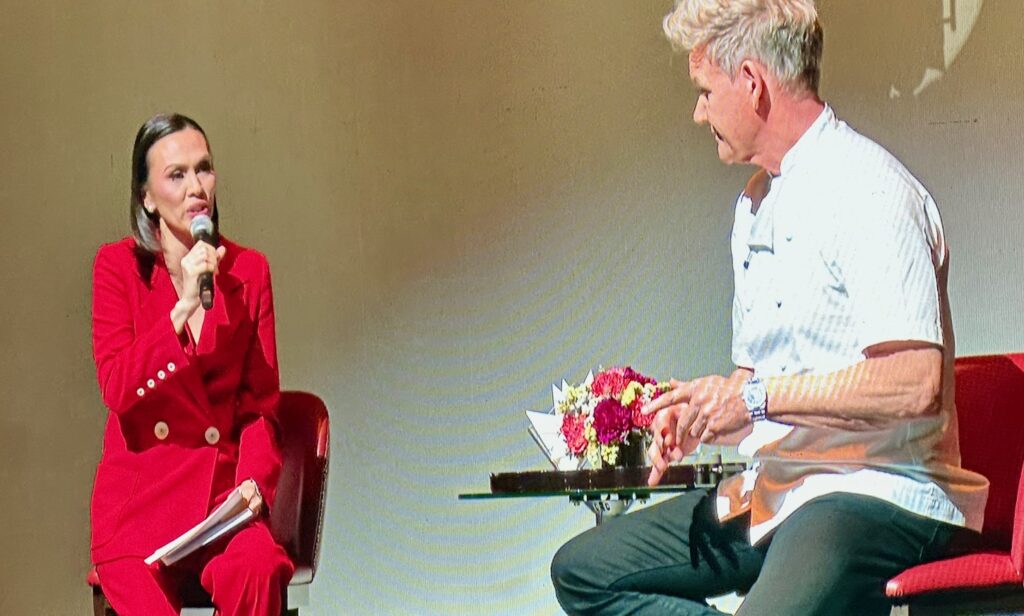
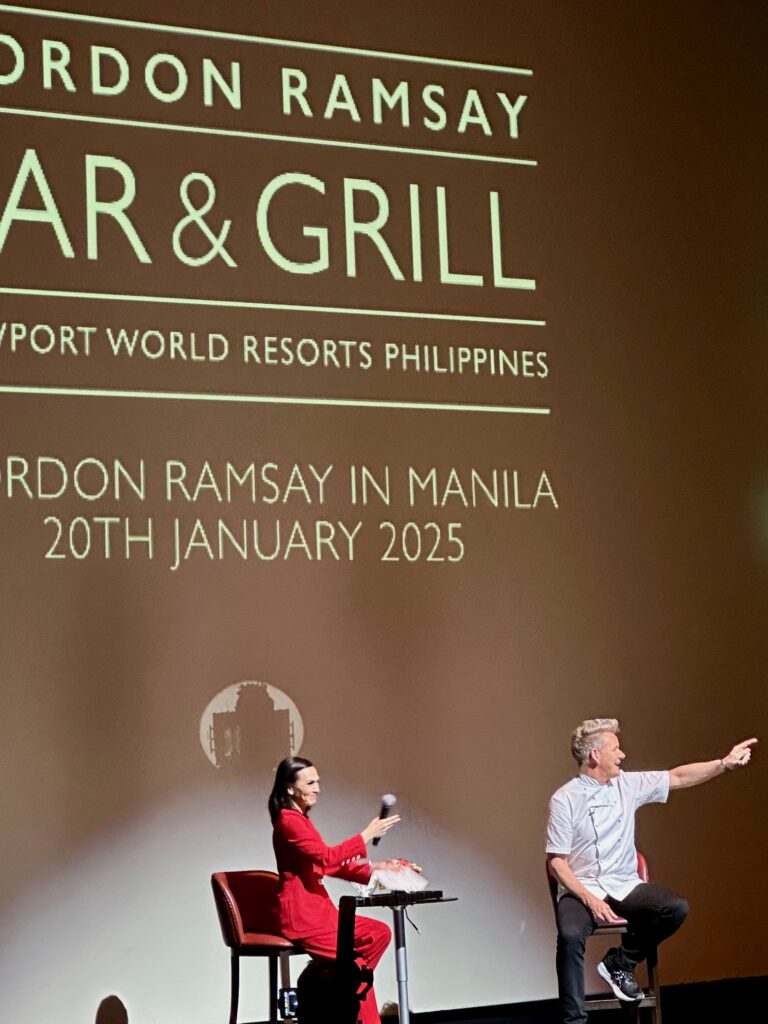
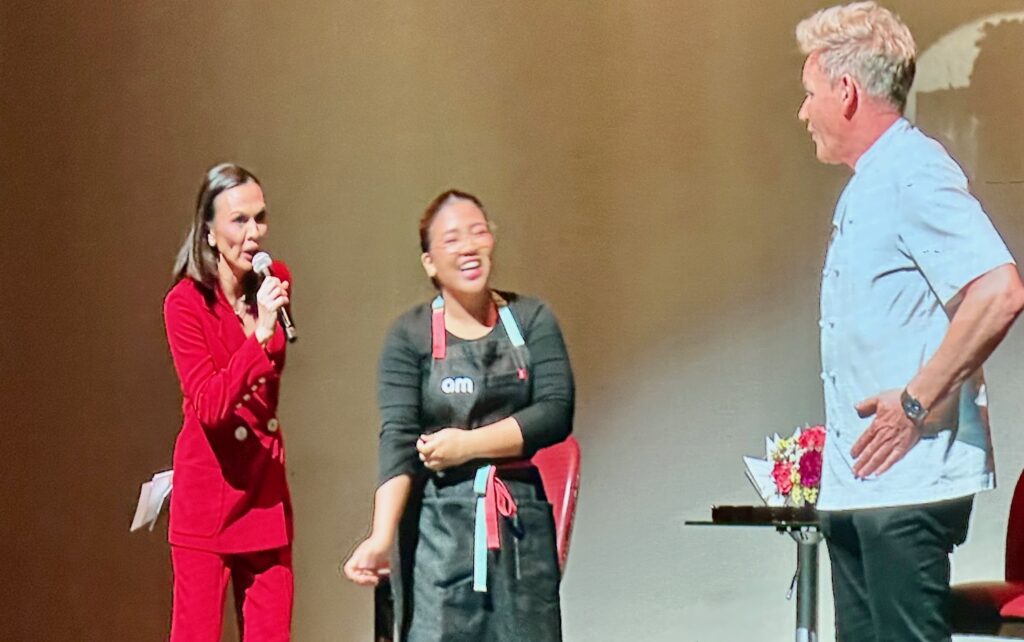
Instead, the 58-year-old father of six came across as warm, gracious, soft-spoken and even fatherly as he tried to share his knowledge and wisdom acquired after years of working in the kitchen and beyond to an enthusiastic audience composed of adoring fans, culinary students, fellow chefs and restaurateurs.
He displayed empathy and was fully involved in answering every question thrown at him by host Issa Litton and members of the audience, including a 20-year-old aspiring chef who reminded Ramsay of himself and his humble beginnings in the London culinary scene at the tender age of 22.
Asked what dish stood out for him during his recent travels abroad, Ramsay, before pausing for several seconds, said: “That’s a tough one. We are lucky because we get to taste some incredible dishes. So, it’s sisig!”
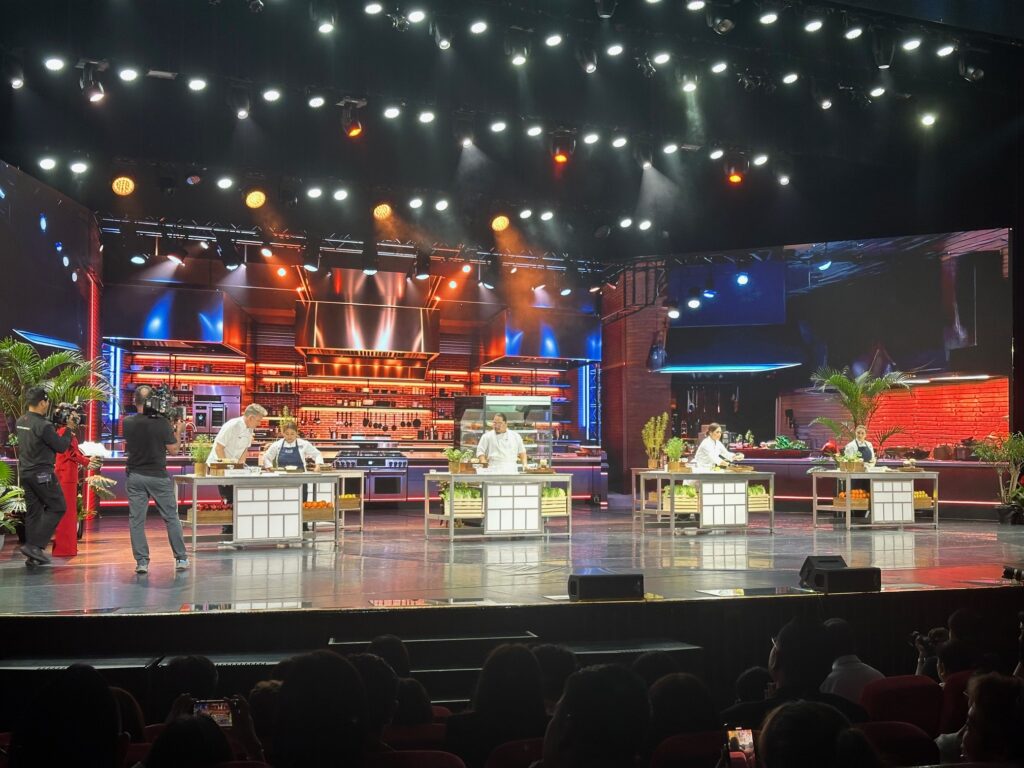
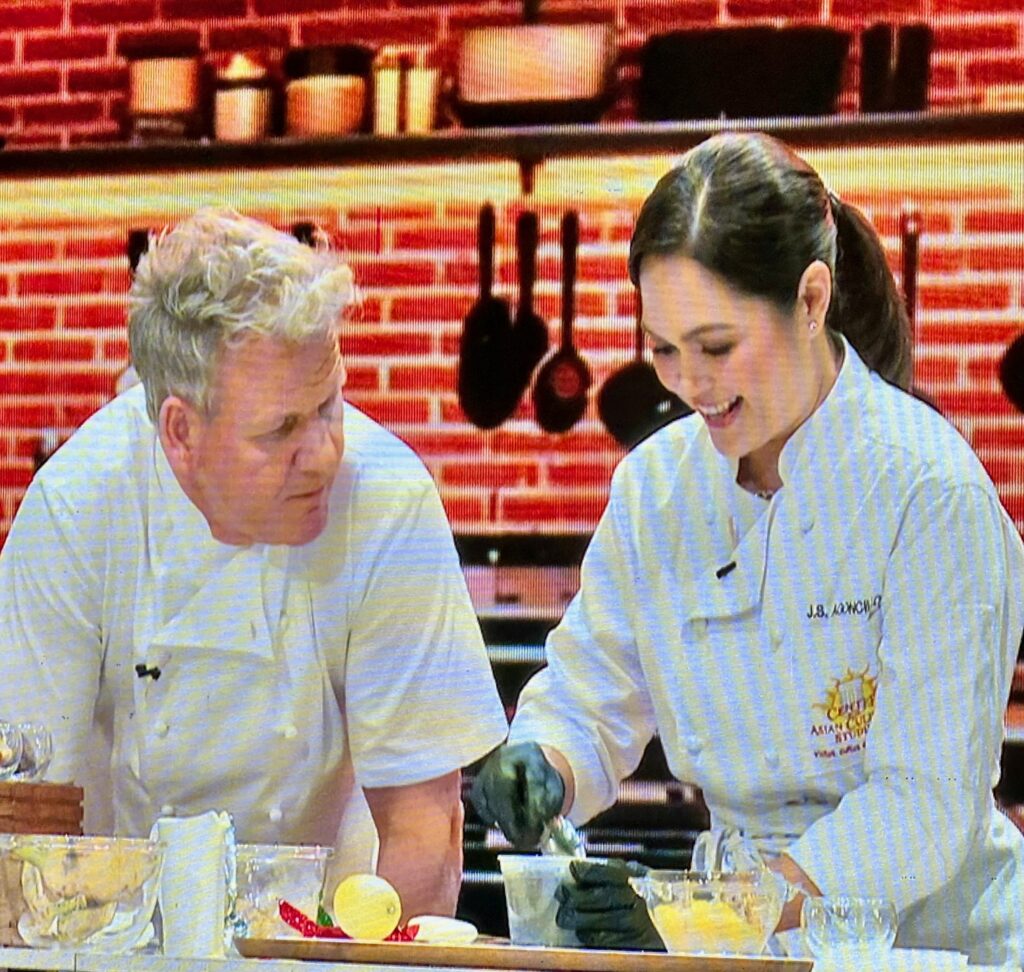
To the crowd’s delight, Ramsay attributed his choice to a young Melbourne-based Filipino chef who runs Serai. “He took the pig’s ears and snout and made a sisig taco out of it. How exciting is that?”
During a meet-and-greet session earlier in the day with young chefs, he also cited a certain Abby, whom he called on stage, for coming up with an “absolutely stunning” and “exquisite” spring roll, which featured a filet of beef Wellington.
“Get dangerous, get creative,” he admonished both aspiring and established chefs. “Social media and the critics help you stay in front of the competition. Because in food, you move with it, or it moves you. And we need to move it. That’s the essence.”
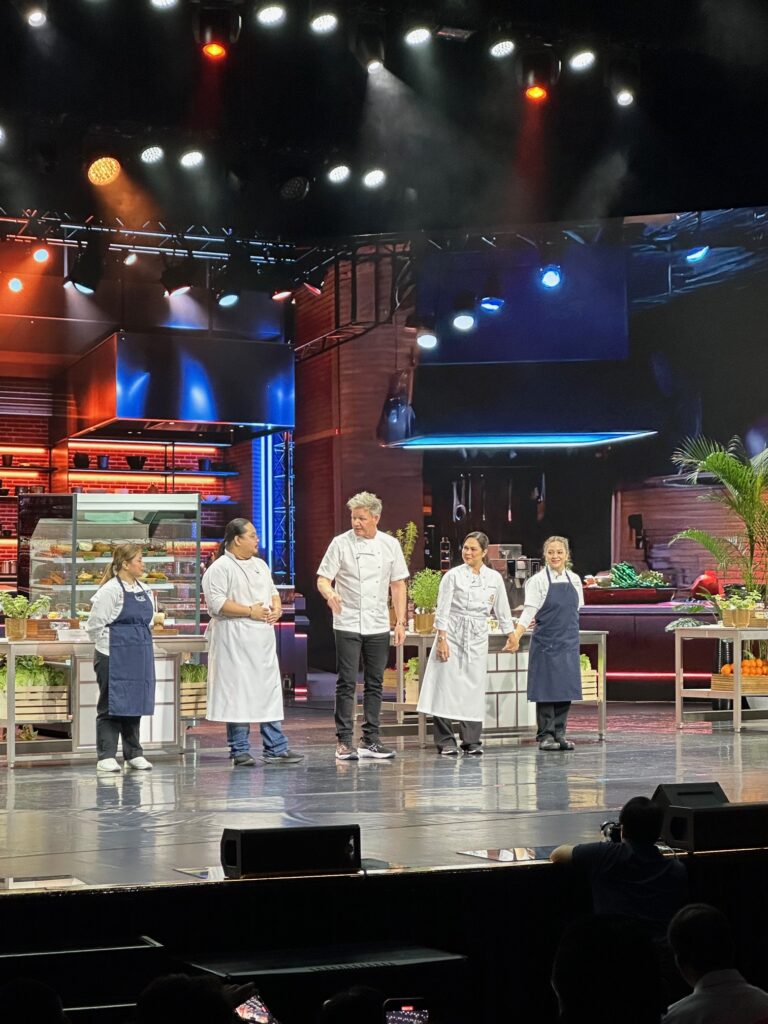
Barely a day after arriving in Manila, Ramsay, like any chef worth his salt, found himself wading through one of the metro’s wet markets early one morning.
“The freshness is incredible, from the live squid and shellfish,” he gushed. “It’s just awash with incredible ingredients.”
But whether it’s adobo or sisig or even halo-halo, which reminds Ramsay of knickerbocker glory, his favorite British dessert, he advised Filipino chefs “to take the basics from generations (who came before them) and evolve it.”
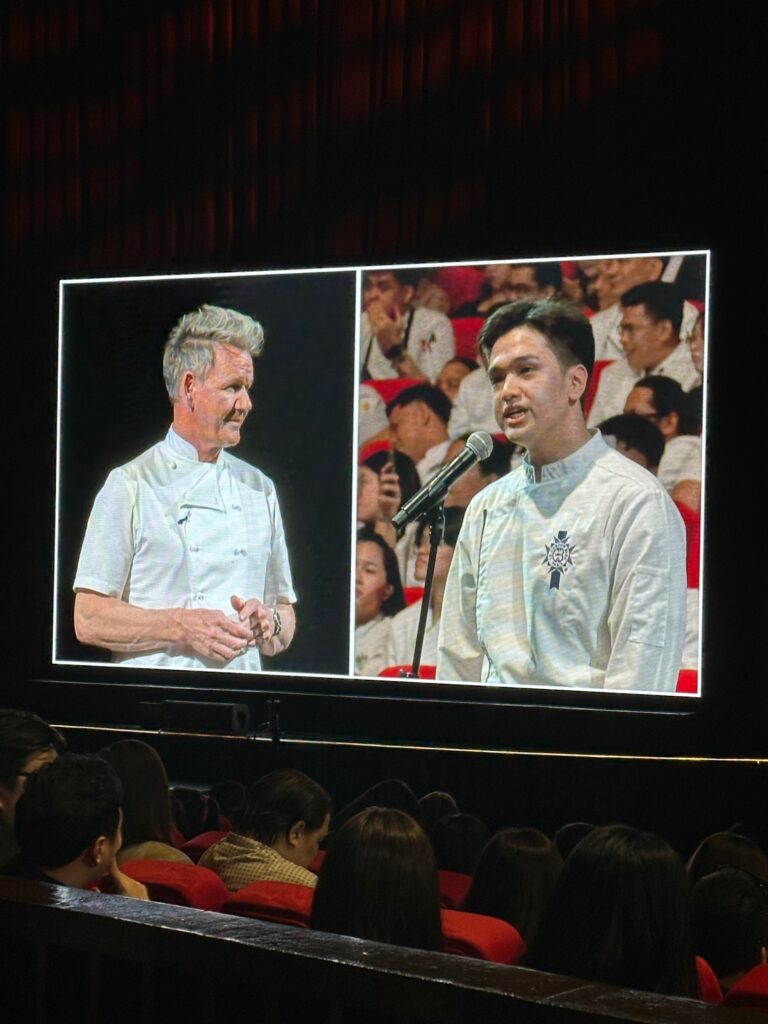
“We don’t disparage it,” he continued. “We evolve it. We respect the (dish’s) DNA, but it’s every chef’s responsibility to push the boundaries.”
And that’s what he and his team did with the British classic Fish and Chips, a staple at the Newport branch of his namesake bar and grill. Without destroying the dish’s essence, he substituted Atlantic-caught fish with lapu-lapu, which thrives abundantly in Philippine waters.
To those dreaming of embarking on a culinary career, he told them to start to “get comfortable being uncomfortable.”
“Don’t get too comfortable. Before the age of 18 to 26, you have to be the most energetic sponge. Food is like (the practice of) medicine, like law. You have to put in eight to 10 years apprenticeship. Understanding the different cultures is crucial. And travel is of the essence.”
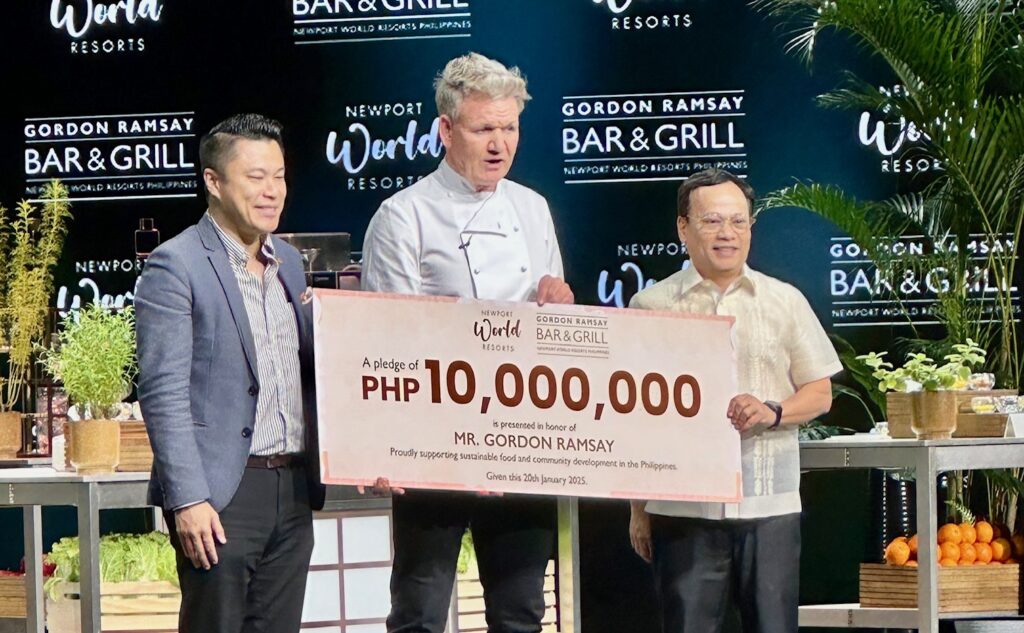
One never gets up to speed with the language, he added, but one can speak and understand other cultures through the food. “Understanding what they’re all about and being able to master what they are about is crucial. Never take any job for an increase in salary. It’s not the money you need, but the knowledge.
“You just have to keep on going up and down. When you start down in the next kitchen, you learn so much more rather than going for a higher position and taking in more responsibility.”
When you’re young and barely scratching the surface of a promising culinary career, it’s not about the responsibility and supposedly higher compensation. “It’s about the education,” Ramsay, who worked and trained for four different restaurants during his salad days before putting up his own restaurant, said. “You can dip in with all the things you have learned, and you could start formulating your own style because you have three to four good mentors.”
As a chef who straddles between the kitchen and the TV set, Ramsay also encouraged his colleagues, especially younger ones, to embrace the power of TV and social media, no matter how seemingly intrusive it is in the actual cooking, as a necessary marketing tool to promote their respective DNAs.
Being exposed and comfortable using it is a “great way of looking at yourself and judging yourself on a global platform. Media is part of food today because it’s never been as good. You can learn from that. We never had any of that access before. We didn’t have that interactive-ness. It’s a big advantage.”
On a more practical note, apart from building a chef’s confidence, the exposure on social media is often instrumental in appealing to investors. The culinary scene has become more crowded than ever. Chefs today need to stand out in a good way if they are to attract dependable partners in their businesses.
Before closing the interview, Ramsay revealed that he and his business partners in Manila are looking at potential sites as they plan to open three more restaurants, including possibly a “beautiful Hell’s Kitchen.”
Organizers also turned the tables on their guest. Instead of Ramsay whipping up something on stage, they invited four junior chefs, including actress Judy Ann Santos, to come up with their respective versions of halo-halo. Yes, since Ramsay also confessed to having a sweet tooth like his Filipino audience, he’s familiar with the national dessert and our preference to use lots of evaporated milk.
Working against time, the four chefs sprang into action, combining traditional halo-halo ingredients with chopped kamias, salt, matamis na bao, among others.
Apart from beating the clock, their respective on-the-spot concoctions needed to impress the one ultimate judge: Ramsay himself! In the end, chef Danica Lucero edged out her colleagues in the halo-halo challenge with her creation that supposedly combined the sweet and sour taste most Pinoys love, thanks to her decision to combine it with chopped and blanched kamias.
The afternoon event was capped off by a P10,000,000 donation from Tan and his team and “presented in honor of Mr. Gordon Ramsay” to support sustainable food and community development in the Philippines.

